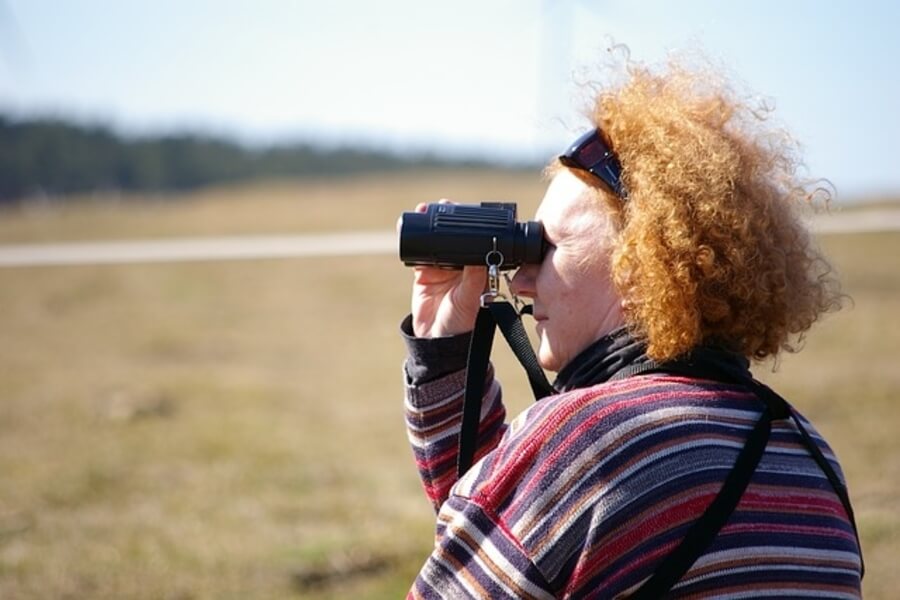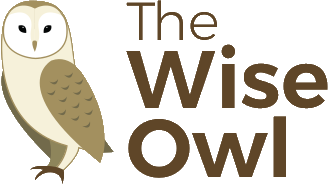Ask any avid birdwatcher why they enjoy watching birds, and you may be there for some time! Birdwatching is a fantastic hobby that reduces stress and keeps the mind active, allowing birders to connect with nature and engage in physical activity[i].
Whether you’re admiring birds through your window or jumping in the car for a long haul trip, birdwatching is an endlessly beneficial pastime. But how can you get started? Here is a simple birdwatching guide for complete beginners to take up this incredible hobby.
The Birdwatcher’s Code
Around 6 million people regularly go birdwatching in the UK[ii], and all of them should adhere to the birdwatcher’s code. It’s essential that you are aware of the birdwatcher’s code and always stick to it while birdwatching.
This code is a set of guidelines laid out by the RSPB that all birdwatchers are expected to follow. It is in place to protect the safety of birdwatchers, the people around them, and the birds they are seeking. The five main points of the birdwatcher’s code are:
- Don’t Disturb Birds or Their Habitats – You should always put the interests of the birds first, so be respectful of their homes. Don’t deliberately destroy their habitats trying to find them, and under no circumstances should you disturb birds or their eggs.
- Be An Ambassador for Birdwatching – Birdwatching is a wonderful hobby, and others may want to enjoy it too. People are likely to approach you with questions or interests while you are out birdwatching, so try to respond positively. Your enthusiasm may encourage them to gain an interest in birds and wildlife and help their conservation.
- Follow The Laws and Rules for Any of Your Birdwatching Spots – It’s important that you are aware of any local laws and rules wherever you go when birdwatching. You don’t want to harm the wildlife, people, or land, and you definitely don’t want to get in trouble.
- Record Your Sightings – Conserving bird species is important, and birdwatcher’s play a vital part. You should record all your bird sightings to the County Bird Recorder and the Birdtrack website to help them keep up to date with bird species.
- Consider The Interests of Wildlife and Local People Before Reporting Rare Bird Sightings – If you publicly announce the sighting of a rare bird, that place will likely fill up with interested people quickly. This disruption could be detrimental to the wildlife, and the local people, so think carefully before announcing any rare sightings.[iii]
Where To Go Birdwatching
Bird watching isn’t a limited hobby. Of course, you can travel miles across the country to catch sight of some rare birds. But you can also take a look out of your window to find some beautiful species right on your doorstep. The UK is home to many bird hot spots that every birdwatcher needs to see. These are some of the best locations where you can go birdwatching:
- Your Own Back Garden – Yes, you really don’t have to travel far to go birdwatching! You can get just as much enjoyment from this hobby in your own back garden as you can anywhere else. Optimise your garden for a variety of birds with a scattering of bird seed mixes and some well-placed nest boxes to see the range of species flying by right outside your home. Find out how to attract birds to your garden here.
- Farne Islands, Northumberland – From May – July, the beautiful Farne Islands become host to a range of coastal birds, including puffins, terns and kittiwakes.
- Gigrin Farm, Rhayader – This delightful farm is home to a flock of the once-rare red kites, and you can see these fantastic birds of prey being fed every afternoon.
- Isles of Scilly, Cornwall – These three uninhabited islands are rife with rare bird sightings, and people have even spotted American species like the red-eyed vireo in recent years too.
- Loch Garten, Scottish Highlands – Loch Garten is home to the well-guarded nest of the osprey, one of Britain’s rarest birds of prey, and you can see this magnificent species in action. Make sure to explore the surrounding Abernethy Forest for a glance at the capercaillie too!
- Minsmere Nature Reserve, Suffolk – Home to the widest range of breeding birds in the country, Minsmere is brimming with birds, including avocets, nightingales, marsh harriers and bitterns.
- Wallsend Parks, Burn and Dene – These three adjoining parks make a beautiful hot spot for a range of local birds, including Bullfinches, Long-tailed Tits and Kingfishers.
- Shapwick Heath Nature Reserve, Somerset – This nature reserve covers over 500 hectares of marshland, and over 60 different species of bird.

Birdwatching Equipment
Overall, birdwatching is a fairly low cost hobby. If you plan to be only a casual observer, you won’t need any equipment at all! But, if you’d like to identify a range of birds, there are a few pieces that will make it easier.
- Binoculars – Binoculars are vital for identifying birds without disturbing them. The best binoculars for birdwatching should have a lower magnification, as this will provide a clearer picture. Also, they should be easy to carry around for long periods.
- A Camera – A proper camera is the easiest way to capture the birds you see as you don’t have to mess around with your phone. To avoid disturbing the birds, you should get a telephoto lens that allows you to shoot from long distances.
- Spotting Scopes – Although a spotting scope isn’t a regular birdwatching essential, these single lens devices allow objects across land and sea to be seen in more detail than binoculars are capable of. A spotting scope with a magnification between 15 – 60x should suit most birdwatching needs.
- A Notebook and Pen – Recording your observations in detail, including identifiable features and song, can help you find the bird later without rushing, plus serves as a happy reminder of the birds you’ve witnessed.
- Protective Clothing – Whatever the weather, you need to be prepared. Make sure you have the right clothing for the weather and some strong boots that will get you over a range of terrains.
Birdwatching Guides and Accessories
A birdwatching guide isn’t essential to the hobby, though they can enrich the activity. Having a birdwatching guide will also make it easier if your main aim is to find and identify specific birds. The aim of a birdwatching guide is to assist birdwatchers in identifying birds in their natural habitat. Also, they will provide plenty of interesting facts and information about the species.
You can get a birdwatching guide in many forms, including books, apps, websites and even audiobooks, so there’s a guide out there for everyone. However, some birdwatching guides are better suited for complete birdwatching beginners than others, including:
- Collins Bird Guide (Second Edition) – The second edition of this infamous birdwatching guide is perfect for any level of birdwatcher. It is packed with details, illustrations, photos and maps. Also, this book has tips on organising birdwatching trips and answers many common (and uncommon) birdwatching questions.
- Britain’s Birds (Second Edition) – Given the stamp of approval by the RSPB, Britain’s Birds is one of the most comprehensive field guides out there. With photographs of details, including plumage, to make identification easier, this book was created by birdwatchers for birdwatchers.
- RSPB eGuide to British Birds – Although this eGuide is an accompaniment to The RSPB Handbook of British Birds, it is a perfect standalone reference guide for birdwatchers on the go. It provides high-resolution maps and images, audio snippets of bird calls and a tool to compare different birds.
- Merlin Bird ID – Merlin Bird ID is a nifty little app that can identify birds across England, Europe, America, Asia, Africa and Oceania. You can provide bird photographs or audios, and this app will provide a list to help you narrow it down. This app is available on Android and IOS,
- The RSPB Bird Identifier – This handy online tool helps you narrow down your bird sightings easily. With filters such as ‘where did you see the bird’ and ‘what colour were its feathers’, this identifier can help you find over 407 species of bird.
- Bird Spot’s Identification Guides – The Bird Spot website offers identification for over 240 species of UK birds, from garden birds to birds of prey. These guides are packed with facts and features plus provide clear pictures for you to find your recent sightings easily.
Join Your Local Birdwatching Society
Now you know how to start birdwatching, you should consider joining your local birdwatching society. These helpful groups hold regular meetings and excursions, focusing on spotting a range of birds and encouraging others to do the same. Birdwatching societies are also vital to conservation, so your experience could save a species! Find your local group here.
Is there anything you’d add to our beginner’s birdwatching guide? Let us know your tips in the comments!
Sources
[i] https://www.careuk.com/company/care-uk-campaigns/bird-watch/7-therapeutic-benefits-of-birdwatching
[ii] https://chirpbirding.com/blog/81/how-popular-is-birdwatching/
[iii] https://www.rspb.org.uk/birds-and-wildlife/wildlife-guides/birdwatching/the-birdwatchers-code/
[iv] https://www.rspb.org.uk/birds-and-wildlife/wildlife-guides/identify-a-bird/
[v] https://www.birdspot.co.uk/bird-identification
Gemma Sharp is the resident writer for Love Garden Birds, a supplier of premium bird food and accessories. She has had a genuine love for our feathered friends from a young age, and has dedicated a lot of her time to learning all there is to know about them. If you’re struggling to pick the right bird feed for your garden, need help identifying a type of wild bird, or can’t decide where to put a nesting box, Gemma is the person to go to! She is passionate about sharing her years of learnt knowledge with the public. In her free time, she can be found feeding birds at home with her three young boys.


